Do you remember the post “Sewing without Thread Bunching” from May 2020? Today, I would like to expand on this. The post has already been clicked on over a hundred thousand times. This shows me that there is a great need when it comes to correcting mistakes or, better still, preventing them from happening in the first place. That is why today, we are looking at the topic of “threading the upper thread”.
Threading the upper thread correctly
I already touched on this topic in my April 2020 blog post, which you can find here: How to Begin Sewing Without “Eating Up Your Materials”
I would now like to show you in detail how to thread the upper thread from start to finish. This means, from inserting the thread to using the threader (which of course depends on the model).
The procedure described here applies to all BERNINA models – except for the 8 Series machines (BERNINA 820, 830, 880 and 880 PLUS).
So, let’s get started!
Thread types, thread stands, thread nets and more.
I have often been asked whether it makes a difference which thread stand you use and in what direction the thread is inserted. The newer BERNINA models have two thread stands, one horizontal and one vertical.
Threads are supplied either on cross-wound spools (for example Poly Sheen from Mettler)…
… or on parallel-wound spools, also known as stacked spools (for example Madeira Decora):
Most sewing machine threads are cross-wound. They can be used with both the horizontal and vertical thread stand.
For parallel-wound threads the vertical thread stand can be used but BERNINA recommends using the horizontal thread stand. If this type of thread is used on the vertical thread stand, the thread can drop down under its own weight and wrap itself around the thread stand, resulting in thread breakage.
In addition, “with the vertical thread stand, when the thread is taken off sideways, or if the table is not stable enough, the spool can start to ‘dance’, which can lead to irregularities in the thread tension. This can affect the uniformity of the seam’s appearance” – as the Amann Group writes.
Furthermore, when using the automatic thread cutter in combination with the vertical thread stand, there is sometimes a jolt. This can cause the foam pad on which the thread spool is placed to turn in the opposite direction and pull the thread out of the needle.
On the vertical thread stand, the spool moves with the foam pad when the thread is taken off. Therefore, the take-off direction does not really matter.
If you have very slippery threads, it is a good idea to use a thread net. Here is a photo from a blog post by Nette Löns on the German BERNINA Blog:
Or maybe you are doing embroidery and would like more space to set out all the different colored spools? We also have a solution for this: the multiple spool holder, which is simply attached to the back of the machine.
Video: Threading the upper thread
But enough of the words!
To save you from having to read a long blog post, we at BERNINA decided to create a new video tutorial devoted entirely to threading the upper thread.
So you can just sit back and watch the film. Roll the video!
So? What do you think? Now you will never thread your machine wrong again, right?
Try it out!
I hope you have lots of fun sewing,
Mirjam
 BERNINA Corporate Blog -
BERNINA Corporate Blog -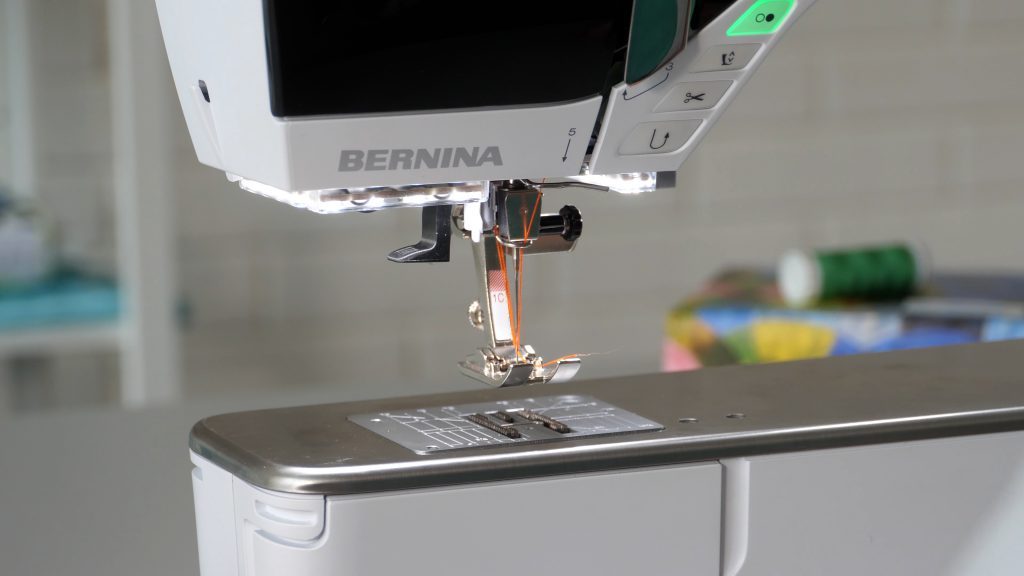
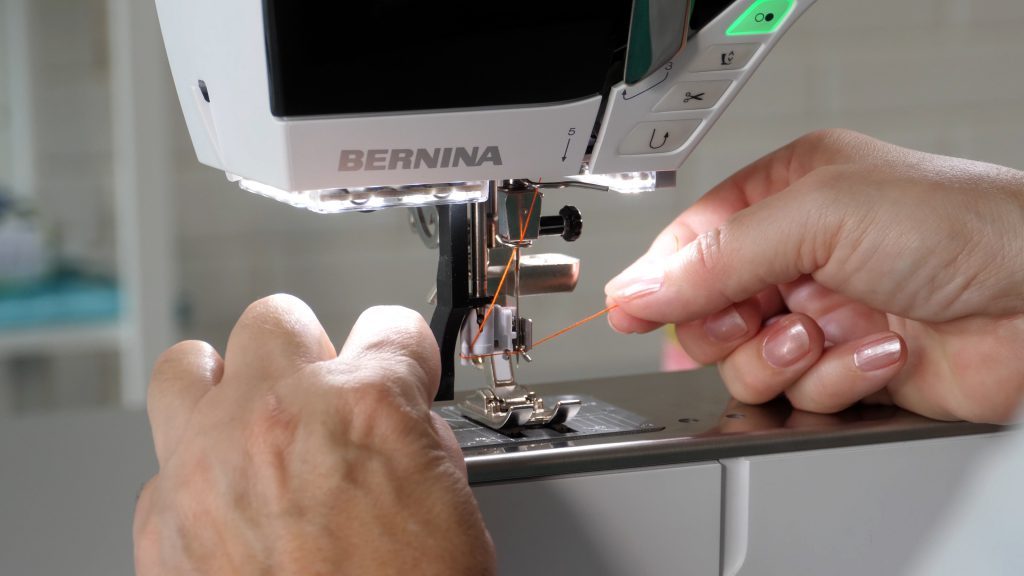

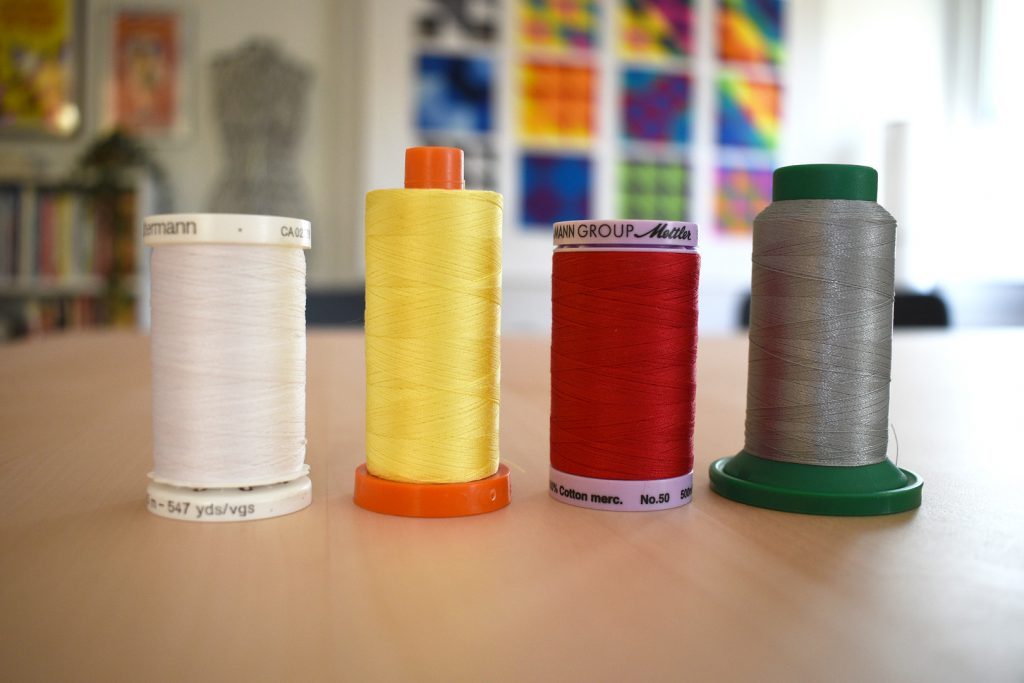
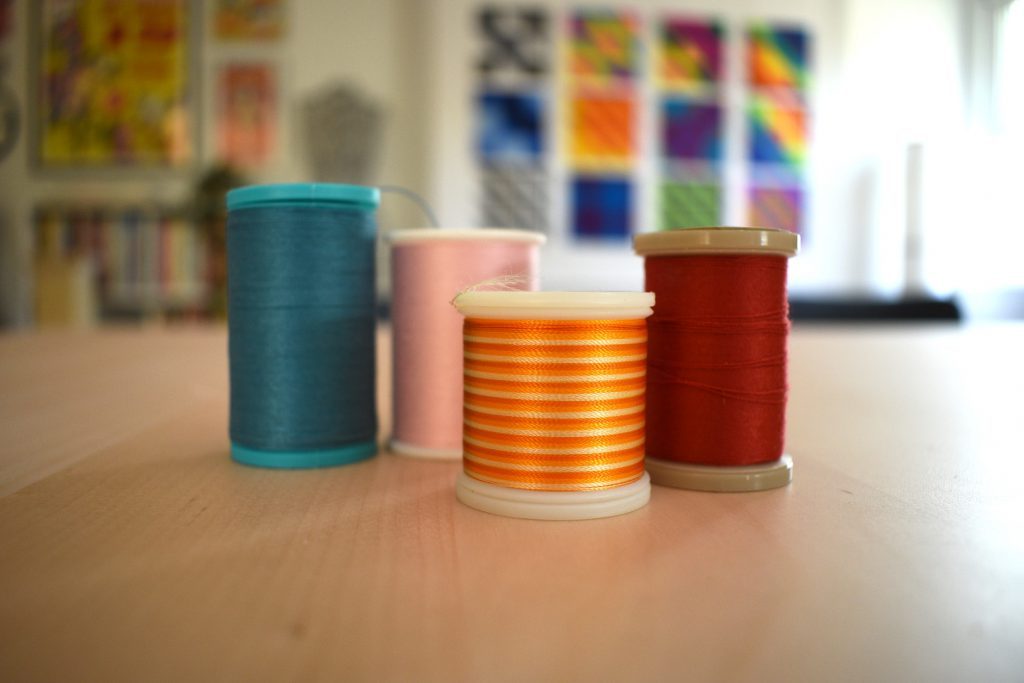
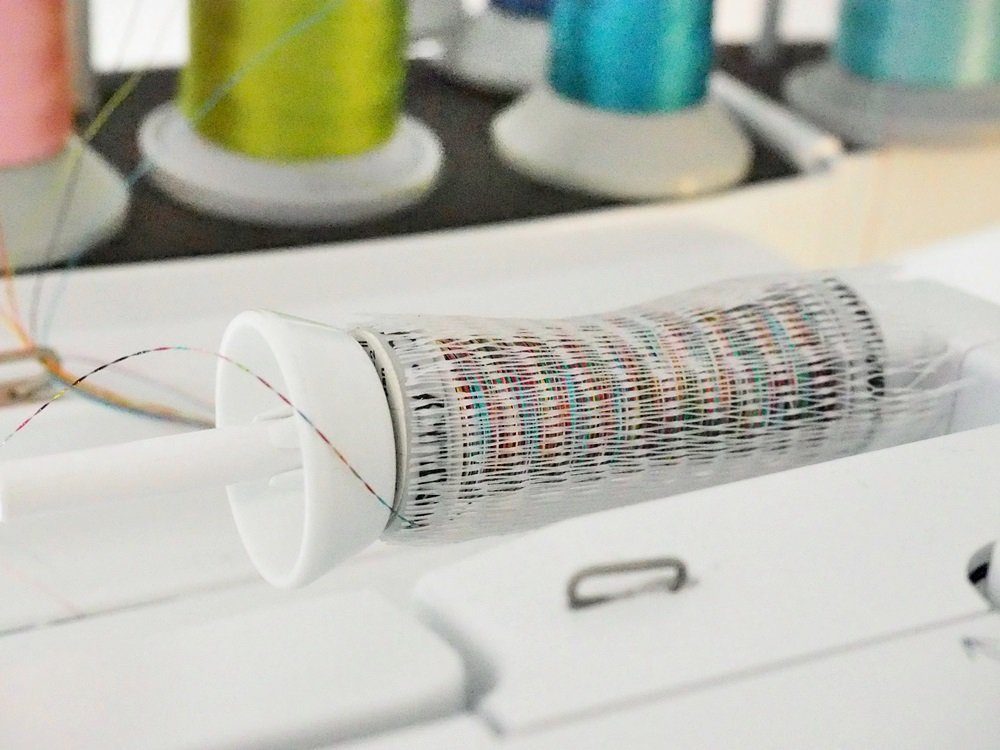
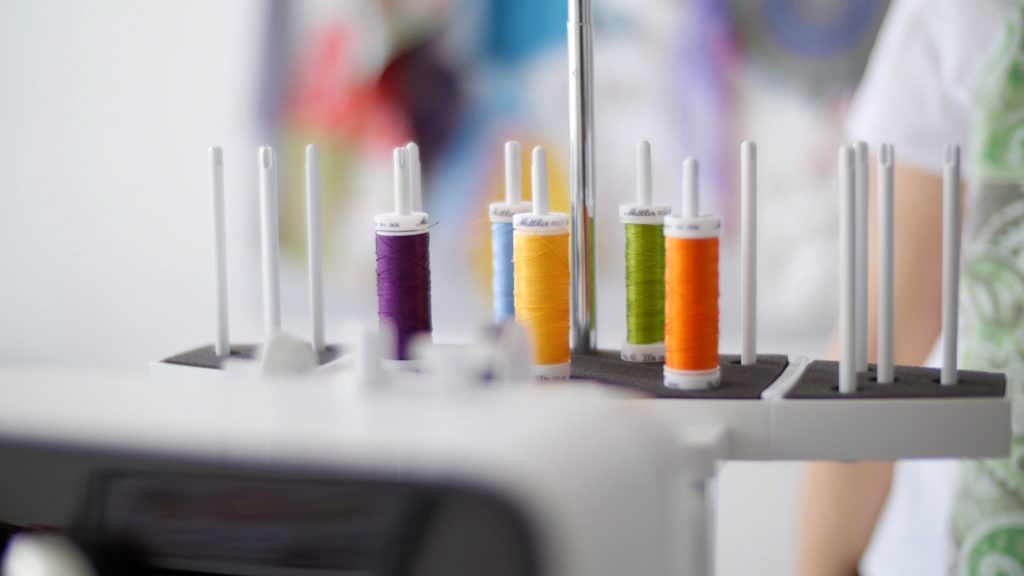
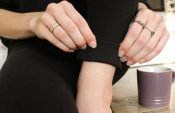
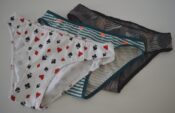
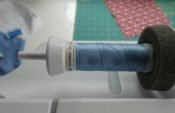
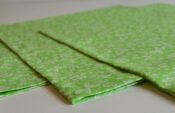
How would you thread, a straight, wound spool of thread on a 880+. My machine did not come with a horizontal thread holder.
I am a sewing novice and just bought my first Bernina. I have had problems with thread nests and using the needle threader. This video was excellent not only for showing you the correct threading technique, but explaining the whys. Extremely helpful, please continue to produce more videos like this.